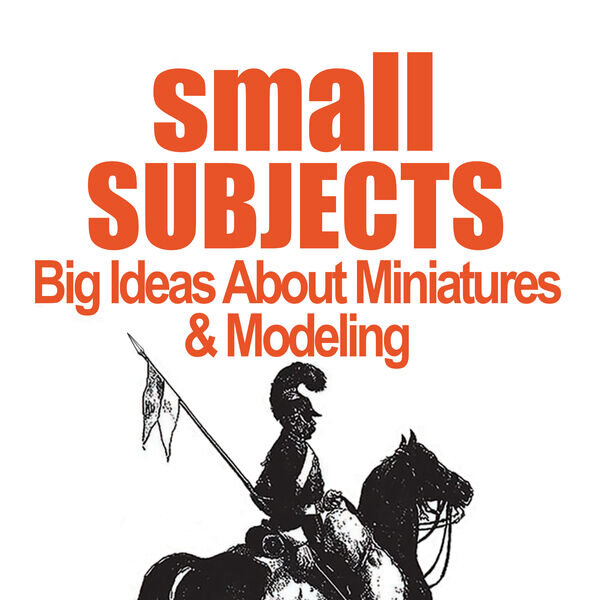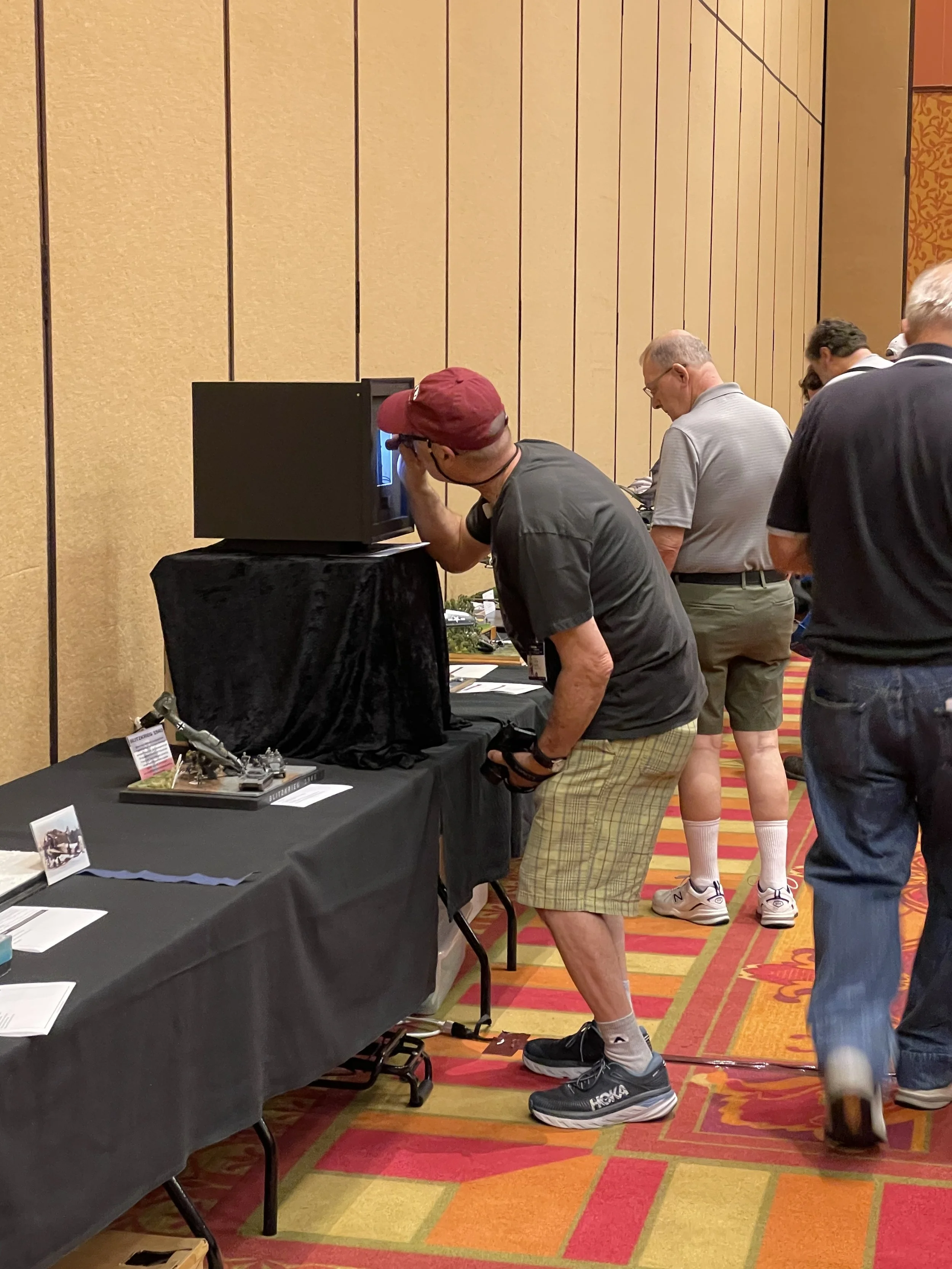Episode 25: Talking about the IPMS Nationals with John Bonanni
/Above: “The Most IPMS Photo Ever” (a spectator shines his flaw-finding flashlight into Jim’s box diorama).
In July, Barry and Jim attended the national convention and “contest” (oh, that word!) sponsored by the International Plastic Modelers’ Society in Omaha, Nebraska. Your hosts had a great time ogling the bounty of incredible work on the full-to-overflowing tables, spending money in the vendors’ rooms, attending and participating in some fascinating panels, and hanging with friends new and old. Barry won first place in Figure Vignettes (Category 740) for his box diorama “NYC, 1977”, while Jim took third place in Aircraft Dioramas (Category 714) for “Night Raid, 1945.” We mention this only by way of emphasizing that the criticisms we level in this episode about the IPMS approach to judging and the competitive mindset of “first, second, and third place” are not motivated by sour grapes, but by the sincere belief that the Open System used at MMSI, MFCA, World Expo, and most figures shows is fairer, friendlier, more accurate, and far more inspiring to the modelers (or dare we say “artists?”) who participate and show their work.
John Bonanni, above, is the second executive vice present of IPMS, and he agrees with many of our thoughts. He’s valiantly agitating for change that, surprisingly, he says most IPMS members support. We shared our thoughts about the IPMS Nats and its system in conversation with John, a talented modeler who primarily favors armor, and who’s written for Fine Scale Modeler, in addition to hosting the Plastic Posse Podcast with T.J. Haller, Doug Smith, Ivan Jensen Taylor, Grant Mayberry and Scott Gentry. (Their motto: "There is NO wrong way to enjoy Scale Modeling!") Below are some examples of John’s work. We chose pieces with figures, and while he’s insecure about his figure-painting, we think his little men look pretty good—as does the rooster!
Below: More snap shots from the IPMS Nats. Jim took the first two, the “group build” of Sherman variants by podcasters (Barry’s is in there, just in front of the whitewashed tank), and the fantasy table, which was already full by early Wednesday as the show was just getting started. As in the figure world, fantasy is the quickest-growing category at IPMS.
During our chat with John, we talked about the coins left at some models by “The Mystery Modelers Syndicate,” a sort of non-sanctioned auxiliary honor which only underscores how stingy the IPMS “first, second, third” prizes can be. These photos are from a Facebook post by Barry’s pal, Utah modeler Martin Drayton.
Finally, we got this great email from listener John Alberts. We didn’t want to read his kind comments about our endeavor in the show (though we greatly appreciate them!) but we did want to answer his questions. Here is what he wrote:
“Have been into collecting and painting miniature soldiers from 1975 until the present time. At age 10 my parents bought me the Tamiya 1/35 German Infantry which started me off on this pursuit of miniature soldier painting. In the 1980s I walked to my local hobby shop (Hub Hobby is still open) here in New Orleans every Saturday until college and grad school. Built and painted Monogram and Tamiya military miniatures. In my late 20s returned to the hobby but this time painting 54 to 120 mm figures. Last few years have been painting flats.
”I write this and the introduction to let you know I find your podcasts very familiar with all the well known guests, the discussion of the hobby literature, and your assessment of the hobby’s techniques, methods, and standards. Small Subjects has the feel and style of the long gone hobby magazines, particularly Military Modelling. From show coverage, to the “modelers and their models,” to covering show stopping pieces, it feels like the last century but with the modern conveyance of information. Wanted to share that the style of your podcast comes across as genuine and respectful of the subject matter and the people. It is entertaining. The run time flies by for the listener. The content has been well balanced and enlightening—how-to’s and personalities, fantasy and historical, past and present. Ya’ll come across as polished and professional, disciplined. The interaction is natural. The podcast seems well thought out, planned, and executed; it flows well. Well done and hope both of the hosts keep it up.
”Hope to hear more about flats! Penny Myers and Greg DiFranco did not seem enough. Also, want to hear more about the details of “boxed dioramas,” although Paine’s chapter in his first book is titled “Shadow Boxes.” The symbiosis with the Boxed Dioramas website is very helpful. The discussion about measurements, lining material, and lighting was inspiring. What about groundwork? Is forced perspective assumed— from size of rubble, to walls, details? What is a minimum depth of a box diorama? Something along the lines of the “reveal rule” was very helpful. Paine wrote to build a shadow box diorama the same as an open diorama; do you have an elaboration of that advice?
”In short, thank ya’ll for the Small Subjects podcast and the website. The work and effort is appreciated.”—John Alberts, New Orleans













